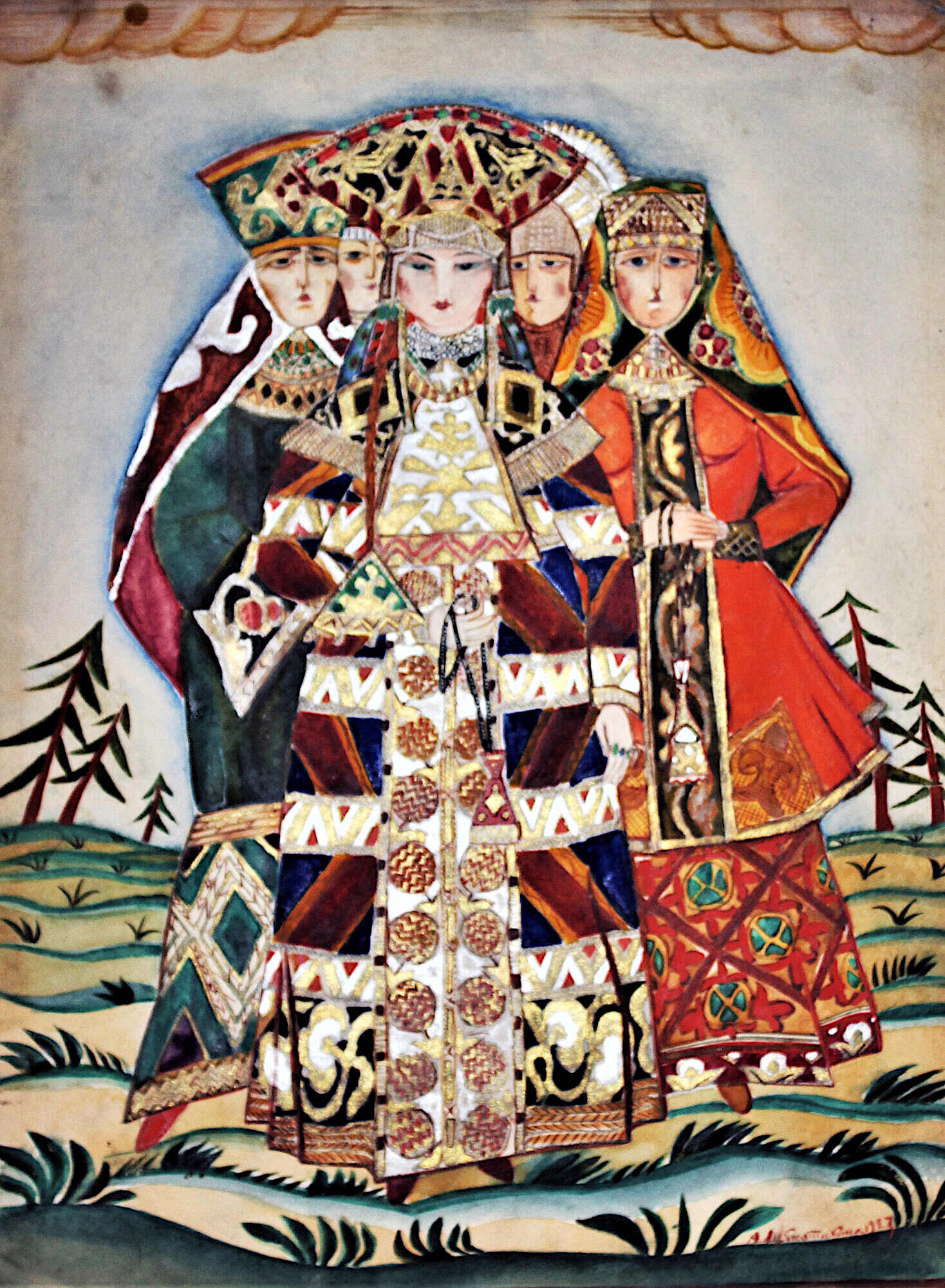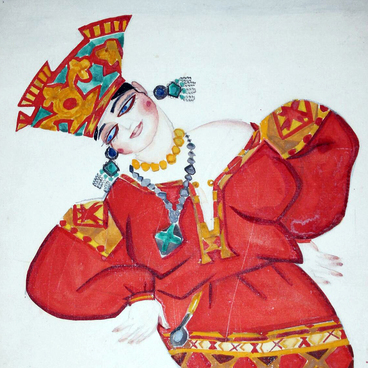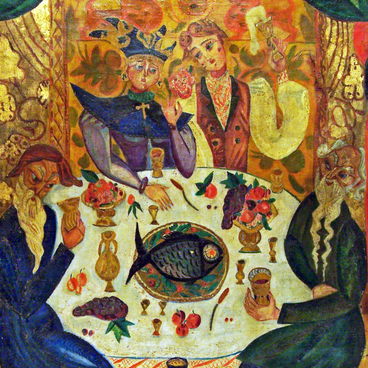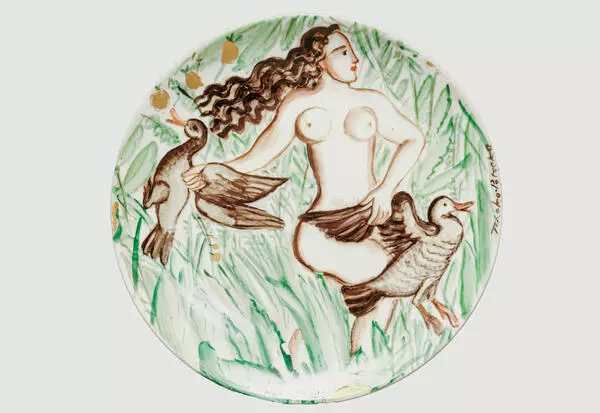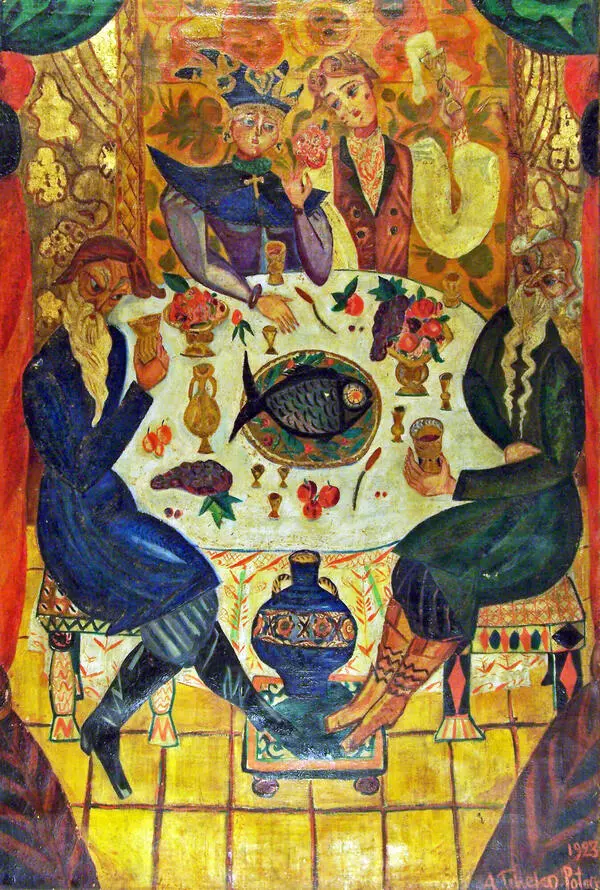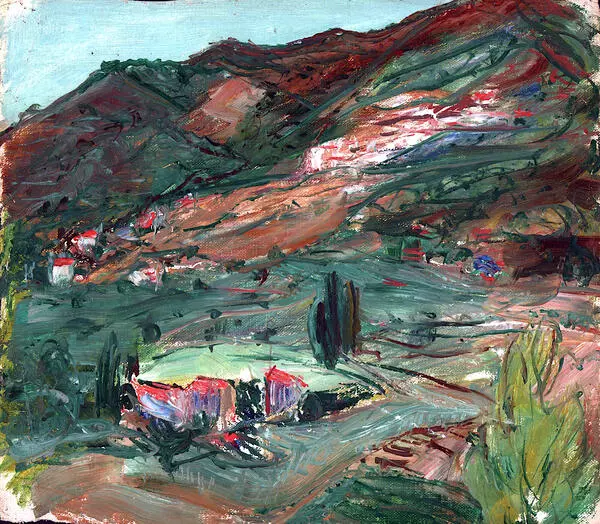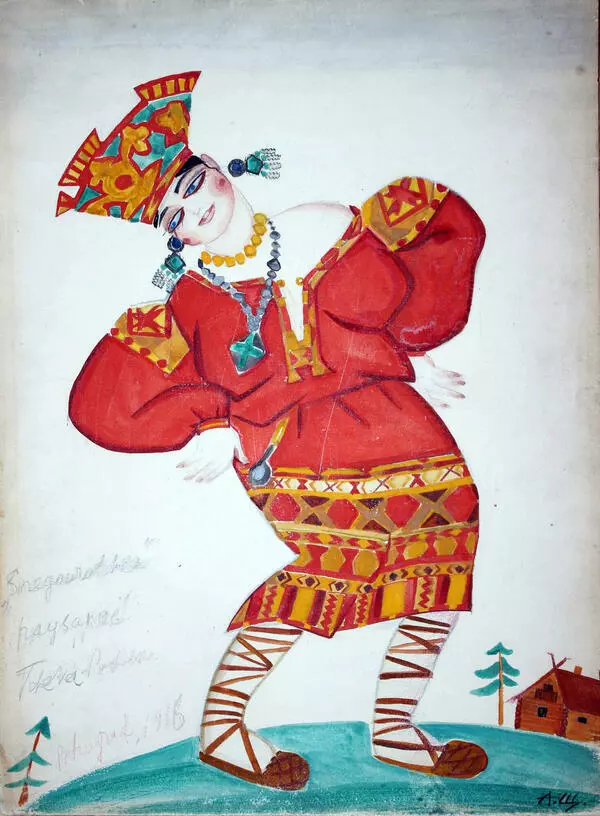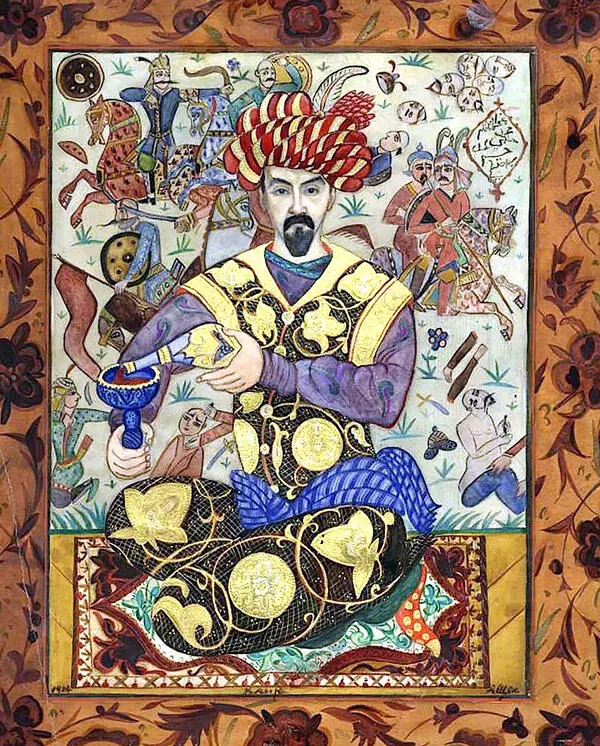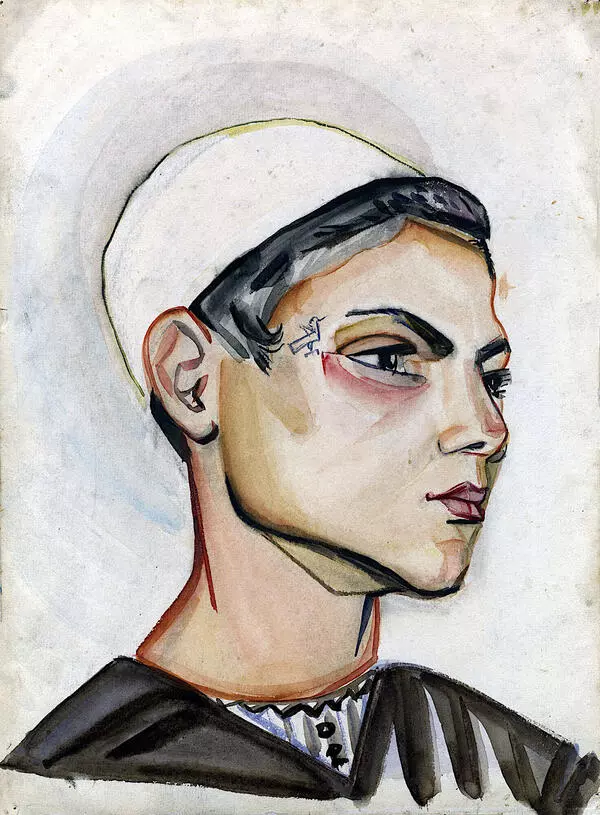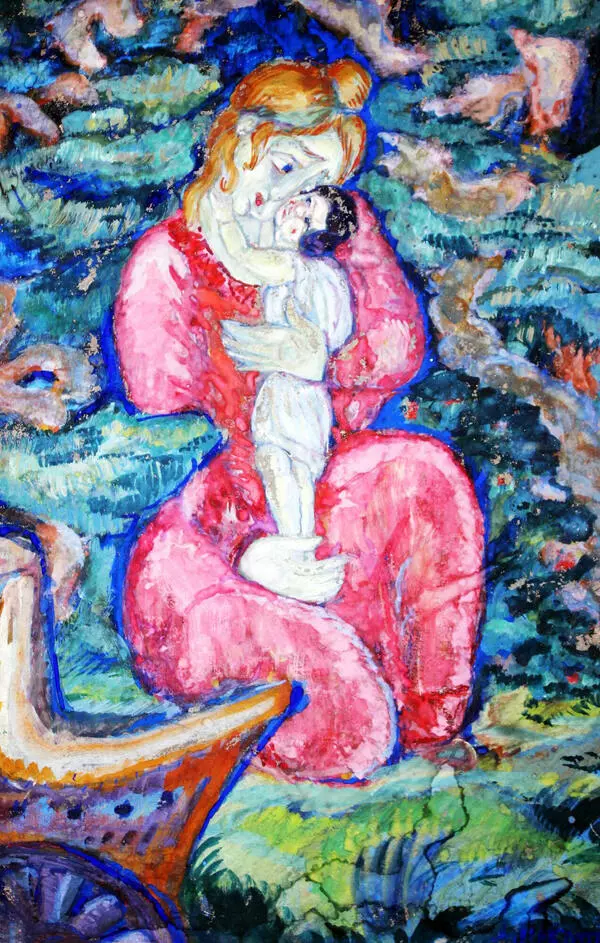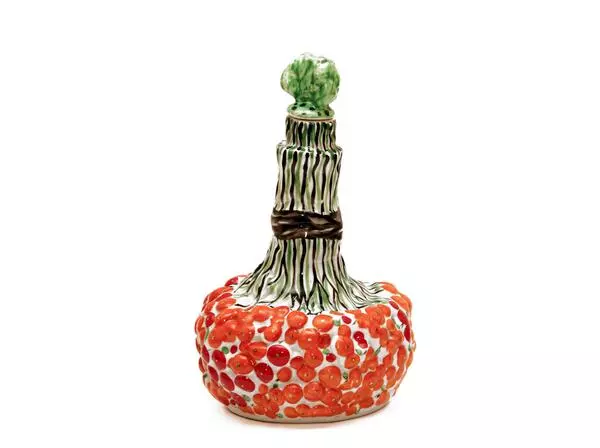With a high degree of probability, it can be assumed that the drawing “Women” was originally conceived as a sketch for porcelain painting.
In the post-revolutionary years, a branch of the painting workshop was opened at the State (formerly Imperial) Porcelain Factory. Alexandra Vasilievna Shchekatikhina-Pototskaya, the wife of Ivan Yakovlevich Bilibin, was among the 25 artists enrolled in the enterprise. The famous Russian artist Sergey Chekhonin, the artistic director of the workshop, invited Alexandra Vasilievna to the factory as a porcelain artist. From that moment on, the majority of her work was connected with porcelain painting.
The presented drawing shows the artist’s desire to develop her own style. Breaking the proportions, using the principles of stylization and rich color palettes, she strives for greater decorative and expressive elements in her works. The range of Shchekatikhina-Pototskaya’s professional interests is diverse: from graphic works to mural painting and applied arts. Her bright individuality is manifested in each of them.
Nicholas Roerich had a rather noticeable influence on the work of Shchekatikhina-Pototskaya. However, Roerich, who was drawn equally to art and archaeology, was inspired at times by the “primeval” prehistory of humans, while Shchekatikhina cared little for such early and vague images. Alexandra came from a family of patriarchal Old Believers, in which they not only remembered, but in those years also engaged in artistic crafts: icon painting, decorating manuscripts, and embroidery. In provincial Russia, the old system of beliefs was not only preserved, but also popular. And therefore, the myth, which Alexandra Vasilievna had long formed of Russia, like many other artists, was not so speculative and abstract. It was based on the impressions of authentic life, the style and costumes of provincial southern Russia, a predilection for ornaments, patterns, color, which flourished in the Old Believers’ culture together with icon painting, hand spinning and book illustration.
Idealized and decorated, this image of Russia was formed, of course, later, in Saint Petersburg, but its real origins are undeniable. They influenced the characteristic protagonists, the stability of their appearance, and the love for subject painting.
In the post-revolutionary years, a branch of the painting workshop was opened at the State (formerly Imperial) Porcelain Factory. Alexandra Vasilievna Shchekatikhina-Pototskaya, the wife of Ivan Yakovlevich Bilibin, was among the 25 artists enrolled in the enterprise. The famous Russian artist Sergey Chekhonin, the artistic director of the workshop, invited Alexandra Vasilievna to the factory as a porcelain artist. From that moment on, the majority of her work was connected with porcelain painting.
The presented drawing shows the artist’s desire to develop her own style. Breaking the proportions, using the principles of stylization and rich color palettes, she strives for greater decorative and expressive elements in her works. The range of Shchekatikhina-Pototskaya’s professional interests is diverse: from graphic works to mural painting and applied arts. Her bright individuality is manifested in each of them.
Nicholas Roerich had a rather noticeable influence on the work of Shchekatikhina-Pototskaya. However, Roerich, who was drawn equally to art and archaeology, was inspired at times by the “primeval” prehistory of humans, while Shchekatikhina cared little for such early and vague images. Alexandra came from a family of patriarchal Old Believers, in which they not only remembered, but in those years also engaged in artistic crafts: icon painting, decorating manuscripts, and embroidery. In provincial Russia, the old system of beliefs was not only preserved, but also popular. And therefore, the myth, which Alexandra Vasilievna had long formed of Russia, like many other artists, was not so speculative and abstract. It was based on the impressions of authentic life, the style and costumes of provincial southern Russia, a predilection for ornaments, patterns, color, which flourished in the Old Believers’ culture together with icon painting, hand spinning and book illustration.
Idealized and decorated, this image of Russia was formed, of course, later, in Saint Petersburg, but its real origins are undeniable. They influenced the characteristic protagonists, the stability of their appearance, and the love for subject painting.
